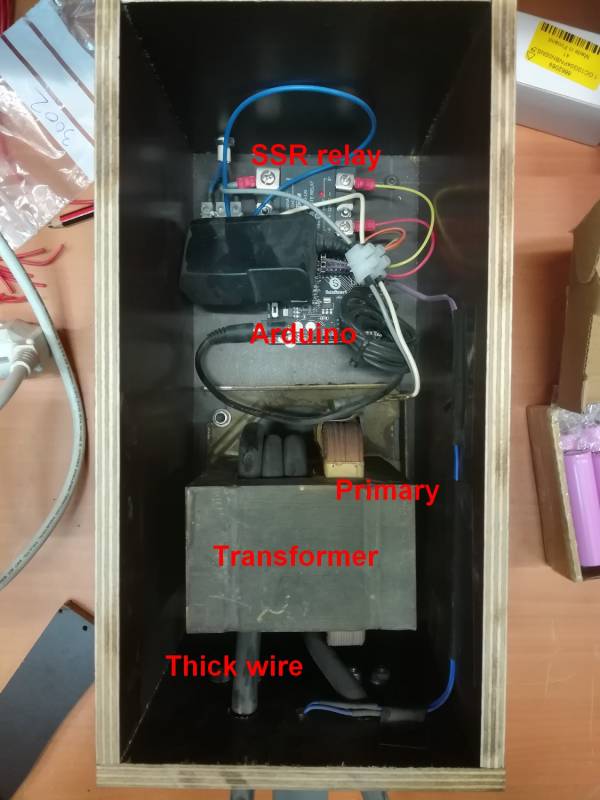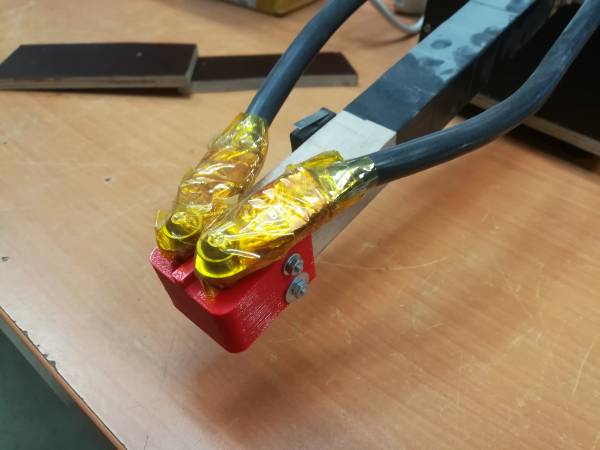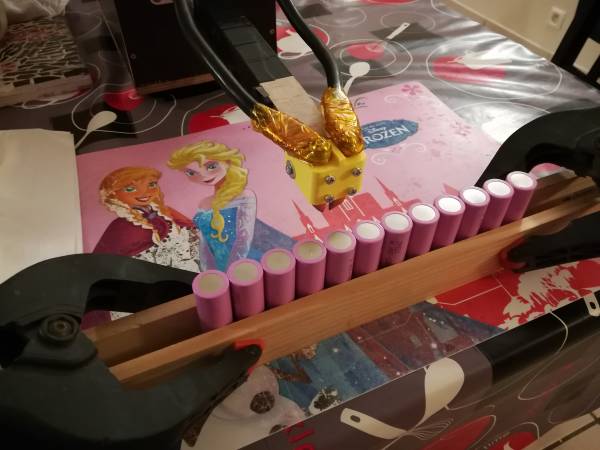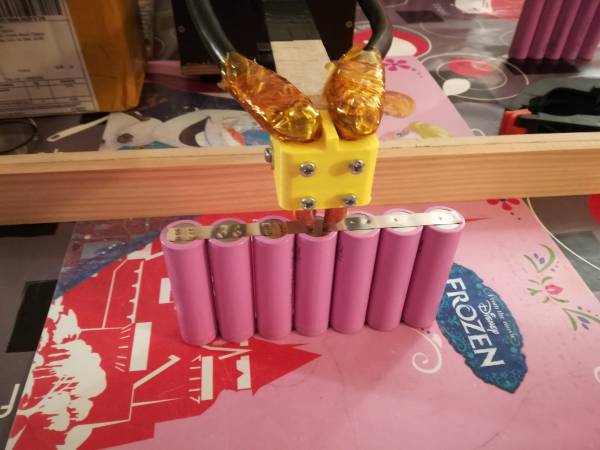Table of Contents
DIY point soldering unit
Introduction
To make good battery packs made of 18650 cells, it's not a good idea to solder them with tin because you're going to heat up a lot the chemical components of the battery and this can reduce the battery life.
For making battery packs, you need to solder with point to point process. For this, you can buy a 18650 soldering unit, but in fact it's quite expensive although it's quite simple to make your own.
The cost for my setup was about 0€, with lot of salvaged parts I already had laying around.
Material needed
- 1 microwave oven (from garbage, you just need the transformer)
- 1 copper barrel of about 10mm diameter
- about 1.5mm long very thick wire (like 30mm²)
- 1 Arduino board (whatever you want, I've used a Uno I already had)
- 1 SSR relay (driven by 5V and for 230VAC on the output
- 1 microswitch
- Some wood for the box and the solder arm
Global instructions
I don't have photos of the build, sorry about that but here are the global steps to make your solder unit :
Salvage the microwave oven to pick up the transformer.
The transformer is made of the primary coil and a secondary coil. On a microwave we want very high voltage so the secondary is with a lot of thin wire. Destroy the secondary only and remove all the thin wires.
For a soldering unit, we need a very high current so instead of the thin wire, just make one or 2 turns of the very thick wire on the secondary.
Machine the copper barrel to be able to screw it to the 2 thick wires and make a point on one side of each (it will be the contact tips for soldering).
Make a box, and an articulated arm for the tips. I've made a 3D printed part to have the tips with the right gap (about 4-5mm).
The Arduino will be used, with a homemade program, to have precise pulses of high current when clicking on the microswitch, to make a solder spot. This will permit good repeatability of the process and will avoid sticking and destroying the cells.
Voilà, your soldering unit is almost finished ! You need to flash the Arduino firmware with the code below and you're good to go !
Arduino sketch
It's very simple. When you click on the microswitch, the Arduino will detect it and then launch a soldering sequence (buy activating the relay) for the time given in parameter.
You can launch a cycle every 500ms to prevent sticking.
int buttonState = 0;
const int buttonPin = 12; // the number of the pushbutton pin
const int relaisPin = 3; // the number of the relay pin
int temps = 55; //le temps de la soudure 55ms
int attente = 500; //temps d'attente entre chaque possible soudure en ms
void setup() {
// put your setup code here, to run once:
pinMode(buttonPin, INPUT_PULLUP); //on définit le pin 2 comme entrée du contact d'activation
pinMode(relaisPin, OUTPUT); //on définit le pin 3 comme sortie pour le relais
Serial.begin(9600);
}
void loop() {
// put your main code here, to run repeatedly:
buttonState = digitalRead(buttonPin); //on lit l'état du bouton
Serial.print("bouton : ");
Serial.print(buttonState);
Serial.print("\n");
if(buttonState == HIGH){ //si le bouton est appuyé
digitalWrite(relaisPin, HIGH); //on active la sortie relais (début de soudure)
Serial.print("SOUDURE");
Serial.print("\n");
delay(temps); //pendant temps s
digitalWrite(relaisPin, LOW); //et on désactive la sortie relais (fin de soudure)
delay(attente); //on attend un peu pour le second cycle (permet d'éviter les rebonds)
}
else {
Serial.print("RIEN");
Serial.print("\n");
}
}
Results
The points are quite good. It take a little time to get used to it. Also, it's important to have the tips well in contact with the nickel strips. However, you'll make some arcs and that can damage the battery cell (I've made holes in 2 or 3 cells this way ; cells are after that leaking some juice and are unusable…).
Also, the tips are getting hop during the process so during long soldering periods, I need to cool them down by putting them in a glass of water.
Anyway, for very low price, it's a good project, and useful as you can use 18650 cells in lot of project.





